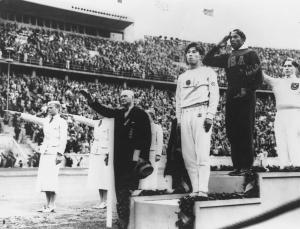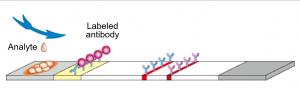Typography is the art and technique to make written language legible, readable, and appealing when displayed. In short, it is a design that uses letters. The arrangement of type means selecting typefaces, point sizes, line lengths, line-spacing, and letter-spacing and adjusting the space between pairs of letters. It ranges from lettering design, logotype design to editorial design. The term typography is also applied to the style, arrangement, and appearance of the letters, numbers, and symbols created by the process. These days, as its range has been broaden, it symbolizes "graphic design "itself. Typography is sometimes also used as a decorative device, not only as a communication of information.
To know more about typography, Hongik Tidings (HT) met the typography designer, Kim Hyun-jin, who is a student of Hongik University, majoring visual art. She is currently working at movie-poster studio as Kim loves lettering design and graphic work that has strong visual image. During interview, she emphasizes that typography is actually the basic realm of visual art because it contains overall lay-out and designer's intention for making TV-programs' caption, books, posters, signs, cover of album and so on. As she mentioned, typography is an essential concept for visual-art designer, HT will narrow down the typography into lettering or typace to focus on letter design itself.
Hongik Tidings (HT): What was your motivation in starting lettering (typeface design)?
Hyun-jin (HJ): When I was attending second semester of freshmen, I took my first design major class. The class was typography 1 of professor Yoo Jiwon, and its main stream was to undestand theory of typography and design process of lettering process by using one font. The reason I entered Hongik University was because I was interested in making videos but my major didn't meet my expectation except for typography. It was a new field to me. After practice, I became confident about my work as I knew that I had an aptitude and preference for typography.
HT: What do you think the attractions of lettering?
HJ: In the case of lettering, there are too many lettering designers. So, it is hard to get new ideas. Although I have a good idea, it is sometimes frustrating to make 2350 letters by adjusting every rules. For example, One letter is formative when applying the rules, but others don't. However, even though the process to solving this problem is the most difficult part, it is also what makes lettering attractive.
HT: How do you do lettering? Can you tell the process?
HJ: First, lettering needs a lot of sketching to organize the ideas. After sketching, designers should draw letter exquisitely in section paper. If designers pass this stage unconsciously, it is difficult to get superb quality of design when they transform sketch into digital files. Next, scan the section paper and move it to the computer. By using programms like Adobe Illustrator, we can quote letters again. In the case of typeface design, there are specialized program like 'Fontrap' and 'Glipse'
HT: Where do you get ideas?
HJ: When I do lettering work, I get motives from movies and songs. Writing impressive subtitles and lyrics, I naturally come up with new ideas. I catch several hints through handwritings on the road such as "No Parking" and "No Smoking" and old signs.
HT: What are the important factors in lettering?
HJ: After retro-lettering by designer Kim Gi-jo, there have been many designers who became interested in lettering. As many works appear, light and shoddy letterings come out around the world. In my opinion, Designing letters requires degree of completion even though it takes time. In addition to this, I think designers always has to keep in mind a bonus mission. In my case, I set a restriction "No more repro-lettering and progress my assingment in that condition.
HT: What are the differences between font (typepace) and lettering?
HJ: Generally, lettering 'draws' one word or short sentence like movie titles and logo of brands. If the letters match the entire concept, it is accepted to be against the design rules. By comparison, font means designing all alphabet and at least 2350 characters of hangul. Letterings can change each letter to maximize their individuality but font should follow the rules strictly as all letters come in a set. I explain it by examples of designer Kim Gi-Jo' work. '엇', '해', '하', and '까' have right curls on closing, so left curls on closing of '야' will be better to harmonize and balance with overall letterings. However, if designer has to draw 2350 characters, unity of whole lettering is more important than personality of the letter '야'. Therefore, it is the major differnce between font and lettering that designer should draw right curls at '야' like other letters.
HT: Can you introduce your favorite or meaningful work?
HJ: I like the poster that I worked in May, 2018. It was the special exhibition <100films 100posters> of "Jeonju International Film Festival". My poster was for the movie
Han Suji suzyhan96@gmail.com
<저작권자 © 홍익대영자신문사, 무단 전재 및 재배포 금지>





